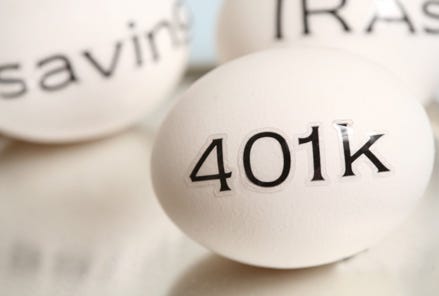What's in the retirement legislation Congress just passed?
Yearend spending bill includes provisions of Secure 2.0
The giant spending bill approved by Congress last week included provisions of the Secure 2.0 legislation that big insurance companies and other financial services firms have been pushing all year.
Secure 2.0 enjoyed strong bipartisan support. It aims to improve and overhaul our retirement savings system, but the changes are mostly incremental - and some will impact only the most wealthy households, who don’t really need the help.
Let’s start with provisions that impact only wealthier households:
Required Minimum Distributions: Secure 2.0 increases - yet again - the age for RMDs from retirement accounts. This change lifts the RMD age from age 72 to age 73, starting on January 1, 2023 then to 75 in 2033.
Catch-up contributions: The bill allows higher “catch-up” contributions. Previously, savers aged 50 or older could increase their contributions by $6,500; that limit will be increased to $10,000, indexed for inflation, for savers aged 60-63. This change is effective in 2025.
A very small percentage of households don’t need to draw at least the RMD to meet living expenses in retirement; and very few can can afford to max out their contributions.
Secure 2.0 also aims to expand access to retirement savings accounts in the workplace. That’s a laudable goal, since only about half of workers currently have access to a 401(k). These reforms could expand access over time - but are not likely to produce changes quickly:
Tax incentives for small businesses. Companies can receive a 100 percent tax credit up to $5,000 for the administrative costs of starting a plan and up to $1,000 per employee to match the employer’s contributions to 401(k)-type plans. The matching contribution credit would phase out gradually over five years.
Part-time workers: Plan sponsors are required to include long-term part-time workers in their 401(k) plans.
Auto-enrollment: New 401(k) plans must automatically enroll employees once they meet eligibility rules. Initial contribution rates will be three percent of pay, gradually rising to 10 percent.
Secure 2.0 does contain one provision aimed specifically at helping low- and moderate-income workers save for retirement. It transforms the current Savers Credit for low and moderate-income people from the current non-refundable tax credit into a more useful direct matching federal contribution to a retirement account. The government would match 50 percent of contributions up to $2,000, phasing out between $20,500 and $35,500 for single filers ($41,000 and $71,000 for couples filing jointly).
There’s also a useful provision allowing employers to set up emergency savings accounts for employees. Like Roth accounts, contributions will be made using post-tax dollars, and withdrawals will be tax-free. A related provision relaxes rules for emergency withdrawals from 401(k) accounts.
The law also tweaks the rules governing Roth IRA and Roth 401(k) accounts. One change harmonizes the RMD rules governing these two account types. Another change impacts catch-up contributions made within workplace plans - these now must be made in Roth K accounts. Finally, there’s a provision that allows transfer of unused dollars in 529 college saving accounts to Roth IRAs.
For more on Secure 2.0, I recommend this overview of Secure 2.0 by Tara Siegel Bernard of the New York Times, and this overview of the Roth changes by the Times’ Ron Lieber. Howard Gleckman of the Tax Policy Center also posted an excellent summary of the new law.
Film festival on aging
Paul Kleyman of Generations Beat Online brings to our attention the 11th Legacy Film Festival on Aging, which will be offered virtually from January 6th through the 15th. The San Francisco-based online festival will show 40 long and short films, most of them documentaries on themes of friendship, vitality, love, creativity, caregiving, longevity – and life’s end.
Paul writes that the festival “is the only collection of features and short films to show aging in its full range of lived experience, while also avoiding the usual Hollywood tropes of “bucket-list” adventures by superannuated stars.



